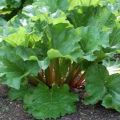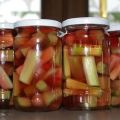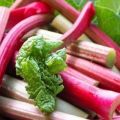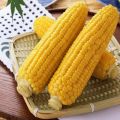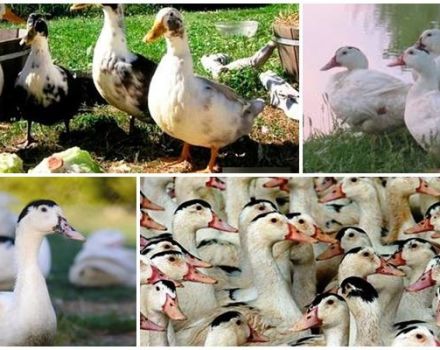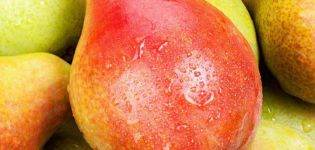Useful properties of the rhubarb plant and its use, indications and contraindications
Rhubarb belongs to the buckwheat family. The place of growth is Central China. The plant is very popular at home, because rhubarb has an extensive list of useful properties. They have been cultivating culture for a very long time. The first mentions were found in herbalists created in 27 centuries BC.
Description of rhubarb
The plant is distinguished by powerful perennial roots, while its upper part (the one that rises above the ground) is annual. The stem height usually reaches 1 meter, but there are cases when the length reached 2.5 meters. The inside of the stem is hollow; both basal and stem leaves are located on it. The outer color is green, combined with characteristic red spots and lines.
Flowering occurs two to three years after planting in the ground. During this period, small white flowers are formed, collected in inflorescences. The process of fruit ripening ends. The plant bears fruit with red-brown nuts.
Rhubarb grows in the sun or in partial shade, the soil is preferably permeable, with a high humus content.
For medicinal purposes, vegetable roots are used. In the fall, they are collected, cleaned, washed, cut and dried.
Beneficial features
Rhubarb is rich in malic acid, various vitamins, including PP and C, sugar, pectin substances. Oxalic acid is also present, the use of which should be limited to children.
The roots of the plant include two groups of biologically active substances:
- Tannoglycosides. They are tannins that have a disinfecting and anti-inflammatory effect.
- Atroglycosides. They have a beneficial effect on bowel function.

The use of the product may have a choleretic and laxative effect, it all depends on the dose, but more often rhubarb has an astringent effect. In addition, vasoconstrictor and keratolytic properties are characteristic of plant therapy.
Indications for use
The benefits of rhubarb are undeniable. Experts often recommend taking it for preventive or therapeutic purposes. An ophthalmologist can recommend the product to patients complaining of eye health. Its regular use in food prevents glaucoma and cataracts, and also helps relieve tension, strengthen muscles and produce natural tears.
The gastroenterologist insists on taking it for gastritis caused by low acidity.Daily use increases the secretion of gastric juice and successfully fights unpleasant symptoms.
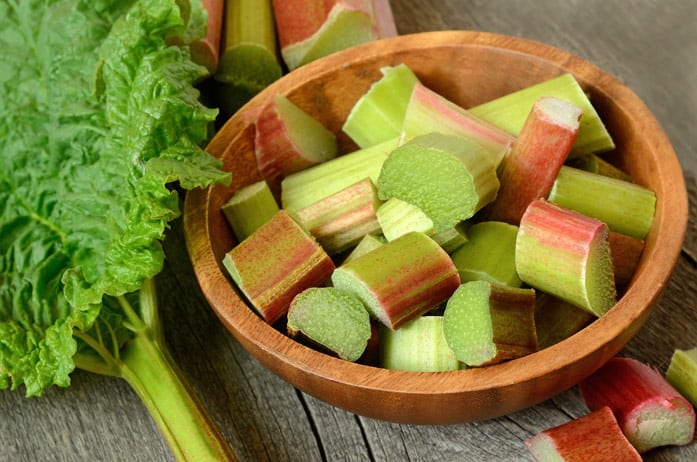
The vegetable can improve blood composition. The product is effective in preventing blood clots. In addition, it will be useful for people suffering from atherosclerosis and thrombophlebitis. Also suitable for patients with problems associated with varicose veins. Cosmetologists note the positive effect of the plant in the fight against age-related skin changes. Its topical application enhances collagen production, which helps to cope with the signs of wilting.
Ways to use rhubarb
Rhubarb is widely used in cooking. Since ancient times, the cuttings of the plant have been used for food, steaming and using them with honey, preparing borscht, sauces, baking delicious pies. Today, the selection of recipes has become even more extensive. The product is included in the first and second courses, salads, confectionery, drinks and preserves.
Although rhubarb is a vegetable, it is cooked more like a fruit. The stem has a delicate taste with a characteristic sourness. The recipes usually contain granulated sugar. When cooking, it is important to avoid excessive sweetness, otherwise the true taste of the product will be lost. Most often it is prepared by stewing in various syrups. A juicy stalk releases a lot of juice during cooking, so water is usually used in small quantities.
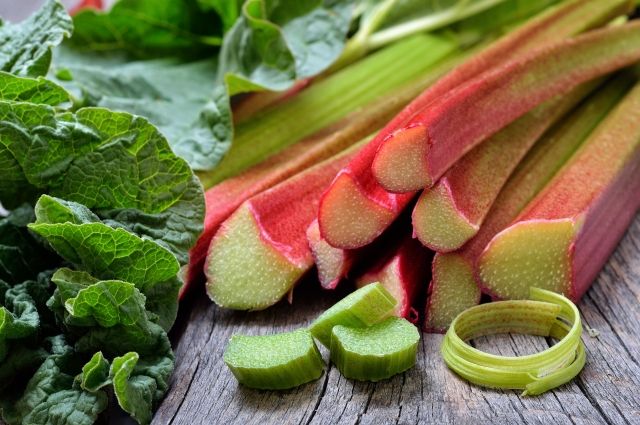
Rhubarb should be harvested in early spring, from April to May. Daily food intake helps to saturate the body with nutrients and vitamins. Before use, the stem is carefully peeled.
The vegetable can be eaten with sugar or honey, and cold, plant-based drinks can help relieve thirst.
Only the cutting can be eaten, it is generally accepted that the foliage and the root system contain a certain amount of poison.
Contraindications
In its composition, rhubarb contains many organic acids that provoke the formation of stones in the kidneys, urinary and gall bladder. For this reason, the presence of urolithiasis or gallstone disease is a direct contraindication to plant therapy. Pancreatitis or gastritis with high acidity should also be a reason for refusal to take. The stems thin the blood, which is why their use is not recommended for bleeding and hemorrhoids.

Traditional medicine recipes
In the field of traditional medicine, the product is in great demand. The owners of summer cottages often plant healing varieties of plants, and then prepare a variety of infusions, powders and other dosage forms. Rhubarb is used for both therapeutic and prophylactic purposes.
Funds based on it are used for diseases of the liver, respiratory system, heart. Vegetable is often used because of its general strengthening effect on the body. The use of the product promotes longevity and the elimination of toxins. It is allowed to be included in the menu of expectant mothers, since the plant contains a colossal amount of useful microelements. We will get acquainted with some folk recipes below.

Kissel
In order to prepare a drink from a medicinal plant, you will need 10-12 stems. The petioles must be cut into small cubes, then boiled until soft, combining them with fresh mint leaves and orange peel. Finally, using a colander, you need to strain and wipe the product. Then put it back on the stove and cook with the addition of starch and sugar.
Infusion
Rhubarb infusion has a mild laxative effect. To prepare it, you will need two tablespoons of crushed rhizomes, which are poured with boiling water. The volume of the liquid should be about 250 grams. After the infusion is left for some time for brewing. The product should be taken at night for 1/3 cup.
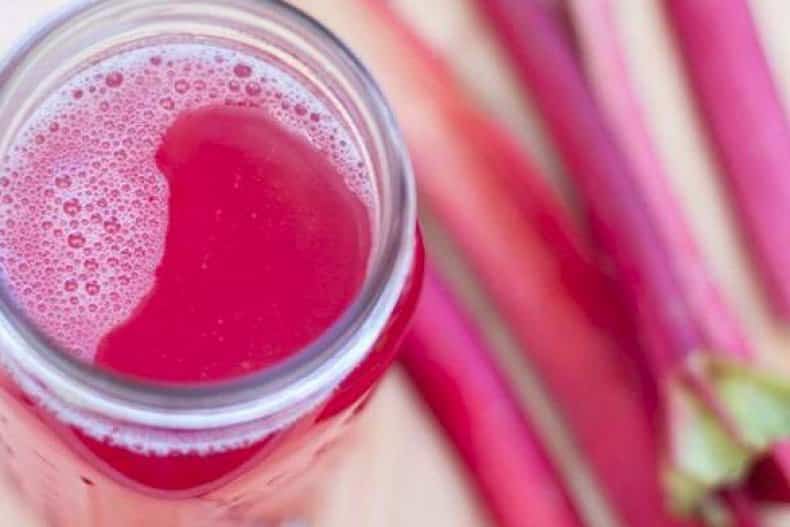
Rhubarb root powder
As a therapy aimed at combating diarrhea, anti-inflammatory and antibacterial treatment, dried root powder is often used. It should be taken twice a day, 0.05-0.3 grams.
Remedy for anemia and hypertension
To alleviate the painful condition, you need to take two tablespoons of crushed dry cuttings. Then the raw material is boiled with boiling water. Water will need about 200 grams. Next, the medicine is boiled for an hour. The collected stems must be kept cool, the refrigerator will help keep them fresh for up to two weeks.
To avoid moisture loss, petioles must be removed from the existing leaves and folded into a regular polyethylene bag or a container made of plastic. For long-term storage, the product is sent to the freezer or preserved.


